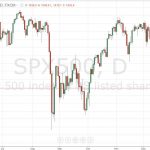1) Fed and the rest of central banks’ policy seen to be divergent again
Fed is walking ahead of anyone else in the world. The BOJ continued its aggressive easing with the introduction of forward guidance. The BOE raised rates, but Mark Carney made clear that it probably needs to wait a long time for another hike. The ECB is in no hurry to increase borrowing costs in the next 12 months.
Currency depreciation in emerging markets may continue. The markets expect the US Fed to raise interest rates once again this month and that will only add more pressure to the capital outflows from emerging markets.
In recent weeks, emerging market currencies have been falling around the world. EM currencies have fallen 13% since April as the US dollar has risen and capital has flowed to more developed markets. This round of currency depreciation in emerging markets started when the Turkish lira began falling in August. However, Turkey is not the only emerging market facing pressure from currency depreciation; more emerging markets would be hit by the same problem.
At the moment, two countries that are probably facing huge pressure are Indonesia and India. Both central banks recently released measures to contain the currency depreciation. But the effects are quite limited as we see both the rupiah and rupee approaching a 20-year low.
2) Rising global trade tensions weigh on confidence and growth outlook
China’s export growth will likely slow over the next few quarters as gains in overseas orders moderate amid trade war uncertainties. Its exports rose 9.8% last month, compared with gains of 12.6% over the first seven months of 2018. The fall in new export orders within the country’s official PMI, which dropped to 49.4 in August from 49.8 in July, will likely persist if the US imposes additional tariffs on Chinese imports.
We notice that Chinese assets, including the yuan, have been largely influenced by the rest of the emerging markets this year. Yuan’s correlation with JP Morgan’s EM currency index reached near 0.9 so far this year, and its correlation with the MSCI EM index hits 0.85.







Leave A Comment